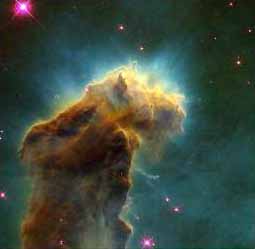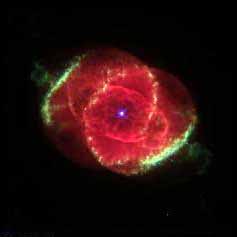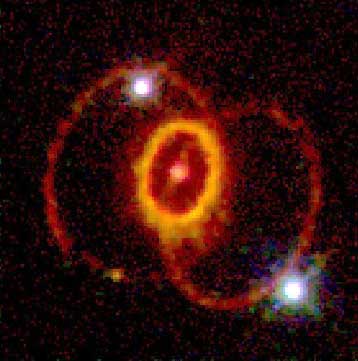If we are unable to obtain the amount we need by the time we need it, on the first, then we will continue to leave the site up in the future as an archive reference site for everyone to use as they need it. Given the first falls on a Sunday, we are able to extend this out until Monday, the 2nd, and that gives us another day which is a real gift.
If you feel you can afford it and would like to contribute to keeping us on the net, than please use the pay pal button off to the right of the blog. ..Because Monday is a holiday, it buys us one more day to try to reach our goal. We hope you will help us to do that.
Vatic Note: This is a very scientific treatment of the question, and issue. Here we learn the difference between a protostar and a "main sequence" star. What they are made of and what the end results will be in their creation and the variables that determine how the start turns out. They even divide the "type of stars" up for us and explain them.
They even get into the birth, life and death of types of stars and how those conditions contribute to birth of new stars and if you accept that we are made of star dust, then this should imply somethings about us. Could this explain how and where evil comes from? I maybe way out of line, but I had to ask.
Remember, I mentioned before, that science was my hobby and every once in a while I have to dump some on you for my benefit. LOL Thanks for your patience where this is concerned. This is a good read, educational and not fast food junk information. It will take some time to read and digest and read some more and digest, so be patient, its well worth the effort.
So much of the "pieces" that we pick up and learn about, add to the bigger puzzle that we are seeking to know and understand. I suspect this will turn out to be one of those cases. We will see. I keep thinking of Dulce. In any case, we are on the path to knowing and understanding. What these evil ones have done is provided us with an opportunity to open our eyes, minds and hearts to truth. Its been an incredible journey and we actually have them to thank for it. How ironic is that???
The Life and Death of Stars Where are Stars Born?
http://map.gsfc.nasa.gov/universe/rel_stars.html
by NASA
Astronomers believe that molecular clouds, dense clouds of gas located primarily in the spiral arms of galaxies are the birthplace of stars. Dense regions in the clouds collapse and form "protostars". Initially, the gravitational energy of the collapsing star is the source of its energy. Once the star contracts enough that its central core can burn hydrogen to helium, it becomes a "main sequence" star.
Image of "Star Birth" Clouds in M16:

PRC95-44b Hubble Wide Field Image
Text link to the HST press release describing this image

PRC95-44b Hubble Wide Field Image
Text link to the HST press release describing this image
Main Sequence Stars
Main sequence stars are stars, like our Sun, that fuse hydrogen atoms together to make helium atoms in their cores. For a given chemical composition and stellar age, a stars' luminosity, the total energy radiated by the star per unit time, depends only on its mass.Stars that are ten times more massive than the Sun are over a thousand times more luminous than the Sun. However, we should not be too embarrassed by the Sun's low luminosity: it is ten times brighter than a star half its mass. The more massive a main sequence star, the brighter and bluer it is.
For example, Sirius, the dog star, located to the lower left of the constellation Orion, is more massive than the Sun, and is noticeably bluer. On the other hand, Proxima Centauri, our nearest neighbor, is less massive than the Sun, and is thus redder and less luminous.
Since stars have a limited supply of hydrogen in their cores, they have a limited lifetime as main sequence stars. This lifetime is proportional to f M / L, where f is the fraction of the total mass of the star, M, available for nuclear burning in the core and L is the average luminosity of the star during its main sequence lifetime.
Because of the strong dependence of luminosity on mass, stellar lifetimes depend sensitively on mass. Thus, it is fortunate that our Sun is not more massive than it is since high mass stars rapidly exhaust their core hydrogen supply. Once a star exhausts its core hydrogen supply, the star becomes redder, larger, and more luminous: it becomes a red giant star. This relationship between mass and lifetime enables astronomers to put a lower limit on the age of the universe.
Death of an "Ordinary" Star
After a low mass star like the Sun exhausts the supply of hydrogen in its core, there is no longer any source of heat to support the core against gravity. Hydrogen burning continues in a shell around the core and the star evolves into a red giant. When the Sun becomes a red giant, its atmosphere will envelope the Earth and our planet will be consumed in a fiery death.Meanwhile, the core of the star collapses under gravity's pull until it reaches a high enough density to start burning helium to carbon. The helium burning phase will last about 100 million years, until the helium is exhausted in the core and the star becomes a red supergiant.
At this stage, the Sun will have an outer envelope extending out towards Jupiter. During this brief phase of its existence, which lasts only a few tens of thousands of years, the Sun will lose mass in a powerful wind. Eventually, the Sun will lose all of the mass in its envelope and leave behind a hot core of carbon embedded in a nebula of expelled gas.
Radiation from this hot core will ionize the nebula, producing a striking "planetary nebula", much like the nebulae seen around the remnants of other stars. The carbon core will eventually cool and become a white dwarf, the dense dim remnant of a once bright star.
Image of a Planetary Nebula:

NGC 6543 Hubble Wide Field Image
Text Link to the HST press release describing this image

NGC 6543 Hubble Wide Field Image
Text Link to the HST press release describing this image
Death of a Massive Star
Massive stars burn brighter and perish more dramatically than most. When a star ten times more massive than Sun exhaust the helium in the core, the nuclear burning cycle continues.The carbon core contracts further and reaches high enough temperature to burn carbon to oxygen, neon, silicon, sulfur and finally to iron. Iron is the most stable form of nuclear matter and there is no energy to be gained by burning it to any heavier element.
Without any source of heat to balance the gravity, the iron core collapses until it reaches nuclear densities. This high density core resists further collapse causing the infalling matter to "bounce" off the core. This sudden core bounce (which includes the release of energetic neutrinos from the core) produces a supernova explosion.
For one brilliant month, a single star burns brighter than a whole galaxy of a billion stars. Supernova explosions inject carbon, oxygen, silicon and other heavy elements up to iron into interstellar space. They are also the site where most of the elements heavier than iron are produced.
This heavy element enriched gas will be incorporated into future generations of stars and planets. Without supernova, the fiery death of massive stars, there would be no carbon, oxygen or other elements that make life possible.
The fate of the hot neutron core depends upon the mass of the progenitor star. If the progenitor mass is around ten times the mass of the Sun, the neutron star core will cool to form a neutron star. Neutron stars are potentially detectable as "pulsars", powerful beacons of radio emission.
If the progenitor mass is larger, then the resultant core is so heavy that not even nuclear forces can resist the pull of gravity and the core collapses to form a black hole. Learn more about the late stages of stellar evolution from the Chandra mission's web pages:
_____________________________________________________________________________
The article is reproduced in accordance with Section 107 of title 17 of the Copyright Law of the United States relating to fair-use and is for the purposes of criticism, comment, news reporting, teaching, scholarship, and research.

No comments:
Post a Comment